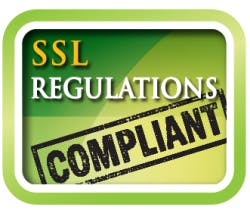The issue of color fidelity and CRI as a metric has sparked some controversy in the solid-state lighting (SSL) community. MARK REA and JEAN PAUL FREYSSINIER comment on recent debate.
We were pleased to see the article from Papamichael, Siminovitch, Veitch, and Whitehead in LEDs Magazine in response to our article, "CRI should never be used in efficacy regulations but a new lumen definition should." It's good for the lighting industry to have these open, written discussions because too often people delegate their understanding of technical information to experts or to standards organizations, whether or not their trust can be justified. Truth and dogma are often metameric to people, including experts, as Galileo observed many centuries ago.
Interested in articles & announcements on SSL regulations & standards issues?
In response to their article, our first question is rather narrow but really simple: Do Papamichael and colleagues really believe CRI, or indeed any "color fidelity" metric, is useful by itself for predicting color rendering benefits from sources of illumination? There are no studies showing that CRI, by itself, can reliably predict which light source people will prefer, or at least not dislike, to illuminate colored objects. Mike Royer recently showed in a US Department of Energy (DOE) presentation, for example, that there were no studies supporting the utility of color fidelity metrics for predicting user preference. So, isn't it, to use Papamichael's and colleagues' term, our "professional obligation" to point out the limitations of CRI currently used in luminous efficacy regulations?
The utility of CRI or color fidelity is beside the central point of our article, however. The point of our article was that current luminous efficacy requirements based upon the long-wavelength biased photopic luminous efficiency function, V(λ), should be replaced with luminous efficacy requirements based upon an unbiased universal luminous efficiency function that captures the full spectral sensitivity range of the human visual system. If this were done, the myth that there is a tradeoff between luminous efficacy and color rendering disappears, so there would be no need to have a compensatory color rendering "patch" to luminous efficacy regulations. Moreover, utilization of the universal luminous efficiency function would prevent regulatory biases against other lighting benefits, like off-axis detection, brightness perception, and circadian regulation, all of which depend upon the retinae's short-wavelength sensitivity. Isn't pointing out the inherent bias of current luminous efficacy requirements against these lighting benefits also our "professional obligation?"
And we never suggested that luminous efficacy should be the only consideration by regulators. In fact, we said the opposite: "...governments want to make sure that increasingly restrictive luminous efficacy requirements do not have collateral negative effects on the expected benefits provided by LED lighting ... (e.g., start time, lamp life, flicker)... This does not mean that minimum color quality criteria couldn't be included in government regulations, only that they need not be introduced to offset the spectral bias of V(λ)." What we are saying, again, is that these potential barriers to market adoption of energy-efficient lighting technologies should be, and logically are, independent of luminous efficacy requirements if they are based upon an unbiased universal luminous efficiency function. Just because a light source has high universal luminous efficacy guarantees nothing about its starting characteristics, whether it flickers, or, indeed, its color rendering properties. Isn't that rather obvious?
MARK S. REA, PhD, is the director of the Lighting Research Center (LRC) and professor of architecture and cognitive sciences at Rensselaer Polytechnic Institute. JEAN PAUL FREYSSINIER, MS, is a senior research scientist at the LRC (lrc.rpi.edu).
Links
LEDs Magazine staff and contributors have routinely addressed controversal issues concerning the solid-state lighting industry, such as the effects of regulations on LED and SSL product developers as well as specifiers, and the impact of metrics on technology advances. Get a well-rounded perspective on such topics via the following articles.
California's SSL regulations support efficient quality lamps for consumers
California missteps with Title 20 LED lamp regulations







